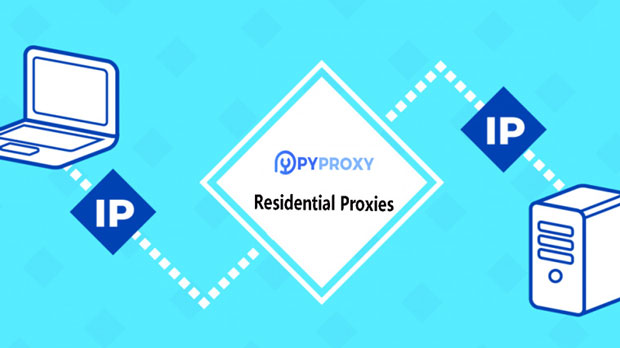What are the future trends in the United States Proxy IP List market?
The U.S. proxy ip list market has been steadily evolving, driven by the growing demand for online privacy, data scraping, and anonymity in digital activities. As businesses and individuals alike seek to overcome restrictions on online access, this market is projected to continue its expansion in the coming years. With the increased focus on cybersecurity, privacy protection, and regulatory compliance, proxy IP solutions are becoming an essential tool for various industries. In this article, we will analyze the key trends influencing the market's future development, examining technological advancements, regulatory changes, and evolving consumer needs. 1. Technological Advancements and the Growing Role of AIOne of the major driving forces behind the future growth of the U.S. proxy IP list market is technological advancements. With artificial intelligence (AI) and machine learning becoming more integrated into internet security and data analysis, the need for robust proxy systems is also rising. AI-powered proxies are increasingly capable of adapting to complex online environments, providing a better experience for users who rely on proxies for web scraping, data gathering, and accessing geo-restricted content.Furthermore, the emergence of decentralized technologies like blockchain could play a pivotal role in reshaping how proxy IP services operate. Blockchain offers increased transparency and security, which can be highly beneficial for users concerned about privacy and anonymity. As these technologies mature, they are likely to be incorporated into proxy services, leading to more advanced and secure offerings in the market.2. Evolving Consumer Needs and the Demand for PrivacyConsumer demand for enhanced online privacy is one of the key factors propelling the growth of the proxy IP list market. As cyber threats, identity theft, and data breaches become more prevalent, individuals and businesses are increasingly turning to proxies to protect their online activities. In the wake of high-profile data breaches, consumers are becoming more cautious about their digital footprint, creating a surge in demand for secure proxy solutions.In addition to privacy concerns, there is also growing interest in overcoming geo-restrictions on digital content. As streaming services, e-commerce platforms, and social media networks implement location-based restrictions, proxy ips allow users to access content and services from different regions. This demand for cross-border access is especially strong among users in countries where internet censorship is a concern. As global online activity continues to grow, the demand for proxies is expected to increase significantly.3. Regulatory Landscape and Its Impact on the Proxy IP MarketThe regulatory landscape surrounding data privacy and internet usage is another crucial factor shaping the future of the U.S. proxy IP list market. With regulations like the General Data Protection Regulation (GDPR) in Europe and the California Consumer Privacy Act (CCPA) in the U.S., businesses are under increasing pressure to ensure that their users' data is handled securely and responsibly.While these regulations have introduced new compliance requirements, they have also led to an increased reliance on privacy-enhancing technologies, including proxy IP services. Proxy providers are expected to adapt by offering solutions that align with these regulations, providing businesses with tools to ensure compliance while safeguarding user privacy. This shift could lead to the development of more specialized proxy services designed for regulatory compliance, catering to industries such as healthcare, finance, and e-commerce, where privacy is of utmost importance.4. The Rise of Residential and Rotating ProxiesIn recent years, the market has seen a shift toward residential and rotating proxies, which are expected to continue gaining traction. Unlike traditional data center proxies, residential proxies use real IP addresses assigned to real users, making them more difficult to detect and block. This has made them particularly useful for activities like web scraping, ad verification, and accessing geo-restricted content without raising suspicion.Rotating proxies, which frequently change IP addresses, are also becoming more popular due to their ability to avoid IP bans and improve anonymity. The combination of residential and rotating proxies is appealing to businesses and individuals who require high levels of security, flexibility, and reliability in their online activities. This trend is expected to dominate the proxy IP list market in the coming years, as these proxies offer enhanced performance and a higher level of trustworthiness.5. The Impact of Data Scraping and Digital MarketingAnother significant trend influencing the U.S. proxy IP list market is the growing reliance on data scraping and digital marketing. As companies continue to invest in data-driven strategies to stay competitive, the demand for proxy IPs for web scraping and competitive intelligence is on the rise. Proxies are essential for scraping large amounts of data from websites without getting blocked, enabling businesses to gather insights, monitor competitors, and analyze market trends.Digital marketers also use proxies to manage multiple social media accounts, perform A/B testing, and access local search results for different regions. This has led to the creation of more specialized proxy services aimed at the needs of marketers and data analysts. As digital marketing becomes more data-centric, proxies will remain a critical tool for gaining an edge in the competitive online landscape.6. The Role of Globalization and Cross-Border Internet UseGlobalization is another key factor contributing to the growth of the proxy IP list market. As businesses expand internationally and consumers engage with global online content, the need for cross-border access to websites, services, and applications becomes more pronounced. Proxy IPs allow users to bypass regional restrictions and connect to the global internet seamlessly, which is especially important for businesses operating in multiple countries.The demand for cross-border internet access is particularly strong in emerging markets, where users may encounter strict internet censorship or limited access to global platforms. By utilizing proxies, users in these regions can unlock the full potential of the internet, contributing to the overall growth of the market. As international trade, communication, and digital content consumption continue to rise, the role of proxy IPs in facilitating seamless global internet access will only become more important.ConclusionIn conclusion, the U.S. proxy IP list market is poised for significant growth in the coming years, driven by advancements in technology, increasing consumer demand for privacy, evolving regulations, and the rise of data-driven strategies. As businesses and individuals continue to seek enhanced online security, anonymity, and access to global content, proxies will remain a vital tool in the digital landscape. The market is likely to witness the development of more specialized, secure, and flexible proxy solutions, catering to a wide range of industries and use cases. As a result, the future of the proxy IP list market looks promising, with ample opportunities for growth and innovation.
2025-02-13
























































